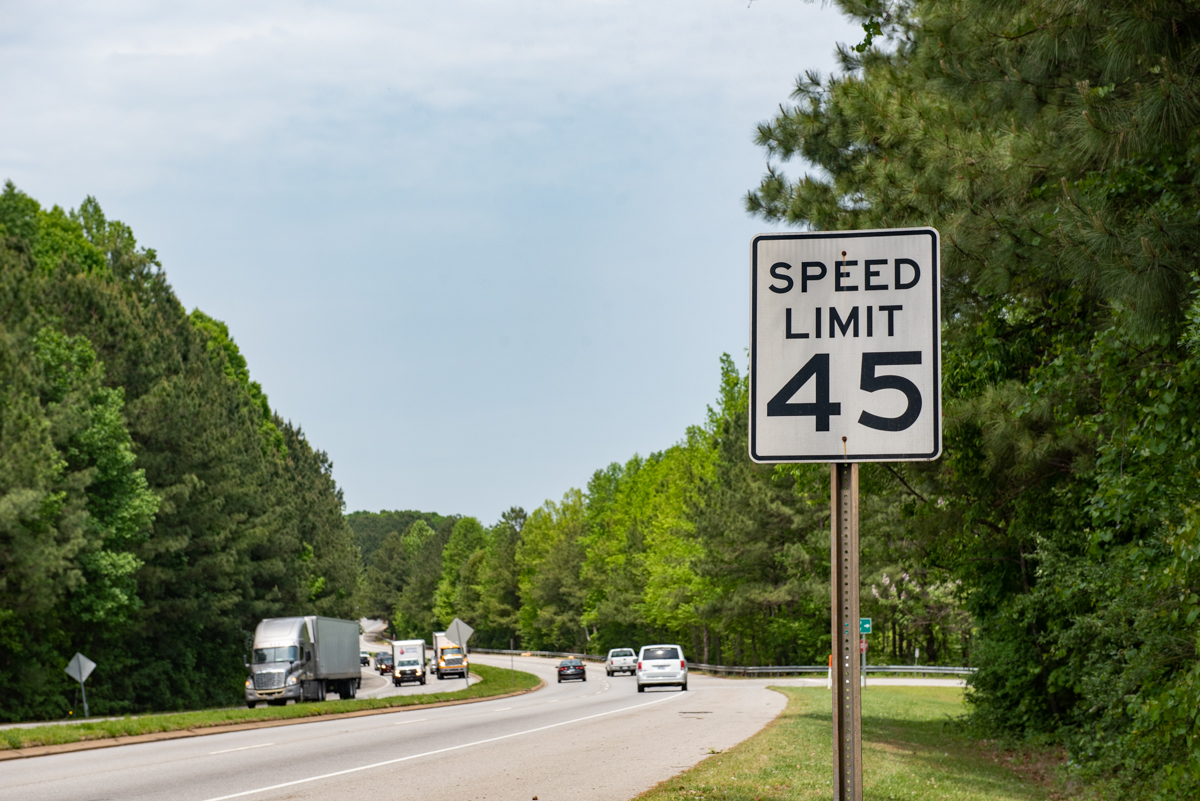
Automatic Speed Limits
North Carolina law sets speed limits within town or city limits at 35 mph, unless otherwise posted. For areas outside of towns or cities, the speed limit is 55 mph, unless otherwise posted. Drivers, however, should slow down and be cautious based on
driving conditions.
The N.C. Department of Transportation sets the speed limit for all state-maintained roads, including access-controlled highways, which are highways with medians that require drivers to enter or exit only at interchanges with bridges, inside the town or city limits.
For other state-maintained roads within the municipal limits, NCDOT and the town or city must concur before changing the speed limit.
For any sign to be effective, it must command the respect of motorists. That means speed limits must be reasonable and enforced. NCDOT is responsible for establishing speed limits, but law enforcement officers have enforcement responsibility.
How Speed Limits Are Determined
Roads are designed for a specific speed. NCDOT may review the speed limit for various reasons, such as part of a study to improve highway safety, or for proposed new developments. Citizens and local officials may also request NCDOT to conduct a speed zone study to determine whether a road has the appropriate speed limits and signage.
The department considers several factors when adjusting the speed limit, such as:
- Alignment of the roadway
- Types of development along the roadway
- The density, or number, of driveways on a corridor
- How far one can see on the road
- Crash history
- Various speed data
Statutory Speed Limits
For interstates and the primary highway system, North Carolina sets the following minimum speed limits, which are enforceable when signed along the road. Vehicles going slower than the speed limit in normal, dry conditions are unexpected and can pose a hazard.
- 40 mph minimum, if the speed limits is 55 mph
- 45 mph minimum, if the speed limit is 60 mph or higher
In addition, some buses can’t exceed these speeds, under North Carolina law:
- School buses: 45 mph
- Activity buses: 55 mph
Speeding Kills
Speeding is a major cause of injuries and deaths on North Carolina roads. Across the state, 424 people died in speeding-related crashes in 2021. For safe driving tips, see the “Speed a Little. Lose a Lot.” campaign by the N.C. Governor’s Highway Safety Program.
Neighborhood Speeding Problems
Speeding on residential streets is a common complaint reported to NCDOT, even though in most cases, only a small percentage of the drivers are actually speeding. People should report such problems to local law enforcement, which can increase patrols and run radar on trouble spots.
In most cases, neighborhood traffic is contributing to the speeding problem. Programs such as community watch or homeowner’s associations are ways to educate these drivers about the dangers of speeding.